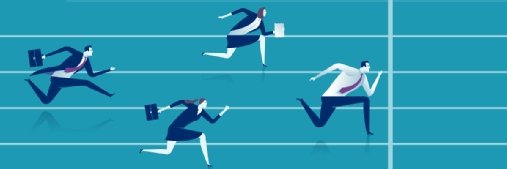New & Notable
How AI Is reshaping IT leadership and the modern CIO
Internal IT succession planning develops CIO-ready leaders, reduces disruption and strengthens organizational resilience through mentoring, assessment and experiential learning.
Manage
Predictable IT spending in an unpredictable economy
As AI and volatility push costs higher, CIOs must adopt flexible budgeting -- rolling forecasts, FinOps and real-time metrics -- to keep IT spend predictable and innovation funded.
Evaluate
How to identify high-potential IT talent early
To impact your company positively, it's vital to spot talented people early in their employment. Here's why and how.
Get Started
From business to IT: Exploring unconventional CIO career paths
The traditional CIO career path often involves a computer science degree and IT experience. Yet, many CIOs emerge from business backgrounds, including supply chain and marketing.
Trending Topics
-
CIO Strategy Manage
From CIO to CEO: Unlocking the entire C-suite
CIOs can evolve from technology leaders to enterprise strategists, taking on higher C-suite roles by building profit and loss fluency, influence, and leadership skills.
-
Digital Transformation Evaluate
Top metaverse platforms in 2026, rise of spatial computing
The metaverse is evolving, beginning with its rebranding as spatial computing and its expansion into the workplace. Here are 15 metaverse platforms to watch in 2026.
-
Risk Management & Governance Evaluate
Regulatory trends every CIO should watch
With new rules shaping data, AI, security, and cloud operations, CIOs must adapt quickly. The challenge is staying compliant without slowing innovation.
-
Apps, Infrastructure and Operations Manage
Why CIOs need AI fix-engineers for chatbot success
Enterprise chatbots can break under real-world use. IT executives need strategies and AI fix-engineers to maintain performance and trust.
-
Cloud deployment and architecture Manage
A data sovereignty primer for cloud admins
Data sovereignty is a critical part of any cloud deployment that cloud administrators must understand. Implement these best practices to ensure compliance now and in the future.
-
Data security and privacy Evaluate
2026 guide to digital forensics tools for enterprises
After a data breach, organizations and law enforcement need to understand what happened. These 10 digital forensics tools collect the key evidence required for an investigation.
Sponsored Sites
-
Artificial Intelligence
Deloitte & Snowflake: Generative AI

-
Storage
Building Beyond Storage

Modern data storage is more than just getting a faster more powerful box.
-
Artificial Intelligence
Intel & Red Hat: Leading the way in Enterprise AI

Combining Intel’s silicon experience with Red Hat’s software innovation to enable AI-driven hybrid multi-cloud solutions.
Find Solutions For Your Project
-
Evaluate
How to identify high-potential IT talent early
To impact your company positively, it's vital to spot talented people early in their employment. Here's why and how.
-
From business to IT: Exploring unconventional CIO career paths
-
Top metaverse platforms in 2026, rise of spatial computing
-
Regulatory trends every CIO should watch
-
-
Problem Solve
Short-form video governance for IT leaders
Enterprises are embracing short-form video for speed and engagement, but its rise brings new complexities. CIOs must establish guardrails to keep content secure and compliant.
-
A day in the life of a strategy-driven CIO
-
The human touch: A CIO's wake-up call on customer service AI
-
A CIO primer on U.S. work visas
-
-
Manage
From CIO to CEO: Unlocking the entire C-suite
CIOs can evolve from technology leaders to enterprise strategists, taking on higher C-suite roles by building profit and loss fluency, influence, and leadership skills.
-
Predictable IT spending in an unpredictable economy
-
AI is driving a workforce transformation
-
An AI bubble burst? Early warning signs and how to prepare
-
CIO Basics
-
Get Started
From business to IT: Exploring unconventional CIO career paths
The traditional CIO career path often involves a computer science degree and IT experience. Yet, many CIOs emerge from business backgrounds, including supply chain and marketing.
-
Get Started
The CIO's real job: Understanding the 'why' behind IT
Informatica CIO, Graeme Thompson, knows that IT often gets lost in operational, technical thinking. His job is to see the big picture and keep his team focused on what matters.
-
Get Started
Top 12 business process management certifications for 2026
These certifications and courses can help you gain the specialized knowledge you need to bolster your credentials and marketability as a BPM professional.
Multimedia
-

Get Started
An explanation of quantum in computing
-

-

-
News
View All -
CIO strategy
Gartner unveils top technology trends for 2026
Analysts reveal the top technology trends that CIOs need to know for 2026, including AI development, cybersecurity and data geopatriation.
-
CIO strategy
DOJ targets state laws in latest inquiry
In another effort to further President Donald Trump's deregulatory agenda, the DOJ is seeking public comment on state laws that burden U.S. businesses.
-
CIO strategy
U.S. could feel effects of EU AI Act as companies comply
The U.S. may be making a deregulatory push on AI, but the EU AI Act means large U.S. AI developers must comply with AI regulations that will affect their models regardless.
Search CIO Definitions
- What is a chief data officer (CDO)?
- What is user-generated content?
- What is business process outsourcing (BPO)?
- What is a data governance policy?
- What is user experience and UX design? Why should you care?
- What is Hyperledger?
- What is data culture? A guide for data-driven organizations
- What is SOX compliance? A complete guide and checklist






